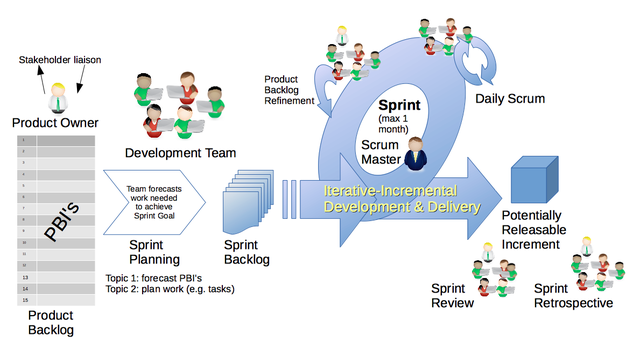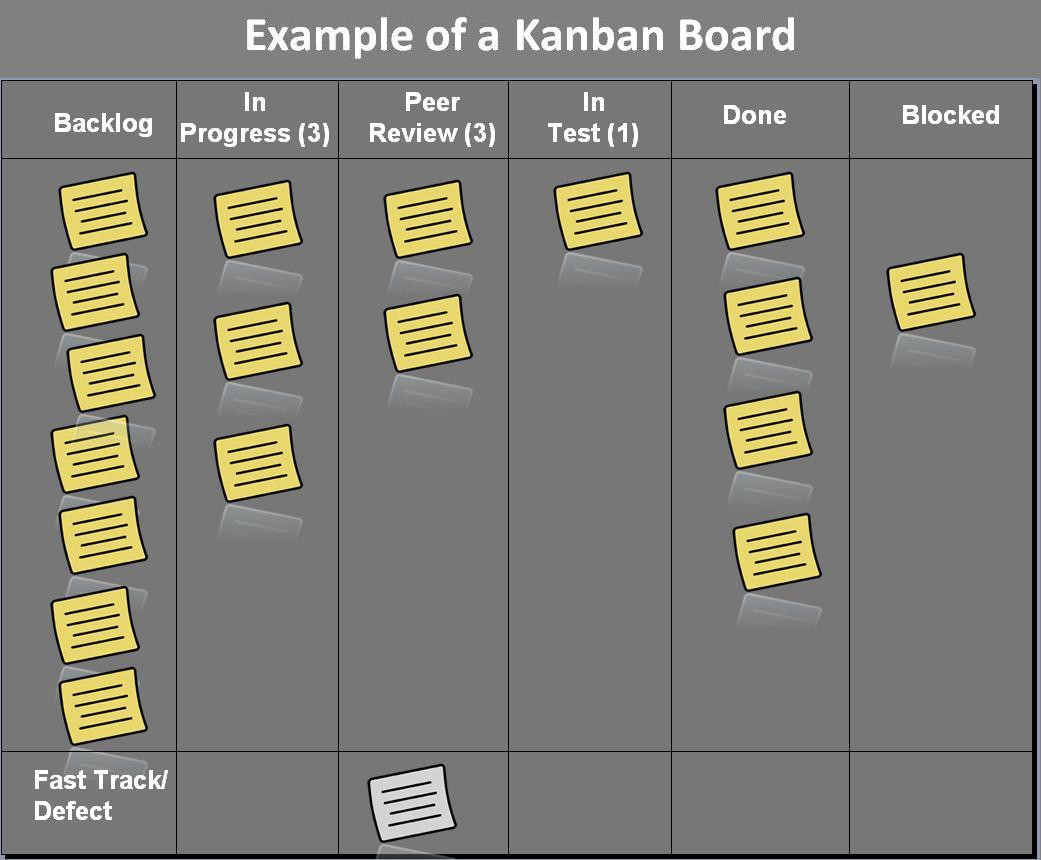Building Powerful Mobile Apps Using Scrum and Kanban Methodologies
Building Powerful Mobile Apps Using Scrum and Kanban Methodologies
Introduction to Agile
Traditional methodologies take a stepwise approach to project execution. Thus, the project goes through the requirement gathering, planning, development, monitoring straight to its closure in successive stages. The most popular model is the waterfall model, it has been a dominant software development methodology.
The method works well for clearly outlined projects with a single deliverable and glued point in time. The Waterfall approach requires thorough planning, extensive project documentation and tight control over the development process. In theory, this could result in on-time, on-budget delivery, low project risks, and predictable final results.
The disadvantage of waterfall development is that it doesn’t enable abundant reflection or revision. Once an application is in the testing stage, it is very hard to go back and change something that was not well documented or thought upon in the initial stage.
As compared to the traditional approach, Agile Methodology has been introduced to make software engineering more flexible and efficient. With ninety-four percent of the organizations practicing agile in 2016, it has become the industry standard for project management.
However, the modern agile approach was formally introduced in 2001, when a group of seventeen software package development professionals met to debate various project management methodologies. Having a transparent vision of the versatile, lightweight and team-oriented software development approach, they mapped it out in the Manifesto for Agile Software Development.
Principles behind the Agile Manifesto
- Customer satisfaction through early and continuous delivery of valuable software is our top priority
- Welcome changing requirements, even late in development. Agile processes act as a catalyst for changing the customer’s competitive advantage.
- Frequently delivering working software, right from a couple of weeks up to a couple of months, preferring a shorter time scale.
- Business people and developers must work together daily throughout the project.
- Build projects around motivated individuals. Give them the environment and support they need, and trust them to get the job done.
- The primary measure of progress is working software.
What is Agile methodology?
Agile is iterative and step-by-step software development methodology. Unlike a straightforward linear waterfall model, agile projects consist of a number of smaller cycles called sprints. It consists of design, planning, development, testing and deployment stages during a software lifecycle.
All strategies of Agile are based on subsequent principles:
- Quick response to any changes with the assistance of adaptive designing.
- Joint elaboration of requirements.
- Rationalization of tasks performed by the development team.
- Step-by-step software development with strict time frames.
This approach is employed in several development projects nowadays. Thus, Agile methodology permits specialists to manage the work of development teams and organize their tasks with efficiency. And this methodology is based on a democratical approach to the whole organization process.
How Agile works?
One cycle is not enough for building a full-fledged product, but each iteration shows part of the functionality that can be tested and/or changed. After every cycle, development team sums everything up and can receive new requirements, then some adjustments can be made in the software development plan.
Each Agile application development lifecycle includes the subsequent stages:
- Planning
- Requirement analysis
- Design
- Development
- Testing
- Documentation
Since Agile app development methodology consists of a couple of short cycles (2-3 weeks each), there’s a risk reduction. A client will see the result once every cycle, and he/she can request to make any changes. Thus, a client has a direct influence on the development and he/she controls it.
Why Agile methodology is good for mobile app development?
1. High product quality
- People and interactions are stressed instead of processes and tools. Customers, developers, and testers perpetually act with one another.
- Working software package is delivered oftentimes (weeks instead of months).
2. Higher customer satisfaction
- Customer satisfaction by fast, continuous delivery of helpful software package.
3. Increased project control
- Face-to-face conversation is the best form of communication.
- Close, daily cooperation between business people and developers.
- Continuous attention to technical excellence and good design.
4. Reduced risks
- Regular adaptation to changing circumstances.
- Even late changes in requirements are welcomed.
Agile Frameworks
Agile has a variety of methodologies and techniques, sharing the principles and values described above. Each of them has its own areas of use and distinctive options. The most well-liked frameworks are scrum, Kanban, Hybrid, Lean, Bimodal, and XP.
SCRUM
Scrum is way more prescriptive in nature, requiring certain components:
- Roles: The scrum master, the product owner, and the application development team
- Artifacts: Product backlog, sprint backlog, and product increment
- Time-boxed events: The sprint, which includes sprint planning, daily standups, sprint reviews and the meetings at the end of an iteration/sprint.
The Scrum guide provides very specific pointers for every of those and is sort of rigid in expecting team adherence, with the primary responsibility of the scrum master being to “ensure that Scrum is understood and enacted.”
The core principles of Scrum are to separate and optimize. So, how does it work? Everything that can be divided into smaller parts should be split. As well, the team should learn from their experience and strive to optimize the process.
In the Scrum, you should cut down your work into small pieces, divide it among your team members, and do one piece of work at a time. As well, do not forget to improve the process each time by asking for feedback as there is always a scope of improvement and there are no limits to perfection.


When to Use Scrum?
Scrum is a perfect Agile approach for projects that need streamlining from intellection to implementation. You can establish an entire project implementation set up by making team roles and allotting intervals to be used as milestones. The team stays in synchronize with the clients and management throughout the development process.
Scrum Team Roles and Responsibilities
The Scrum approach revolves around three main roles:
- Product Owner
- The Product Owner is responsible for defining and finalizing a list of tasks to be completed in a given time interval (Sprint).
- Scrum Master
- This list of activities is understood because of the Product Backlog. The Scrum Master makes easier to the scrum team in many ways.
- The Scrum Master assists the product Owner and also the development team in understanding the necessities for carrying out the scrum approach.
- Development team
- The development team consists of programmers, testers or business analysts that work on the specific project.
Which Tools Are Used?
Some of the project management tools which will assist you simply incorporate scrum into your workflow embrace nTask, Icescrum, Asana, ScrumDesk, OrnageScrum and more.
KANBAN
Kanban is a framework that helps to envision and monitor work. Kanban has only three rules:
- Visualize workflow
- Limit work in process (WIP)
- Measure and improve flow
With fewer rules, it would be quite easy to apply them to scrum. Most scrum teams already visualize progress with the utilization of a task board. If teams apply WIP limits, measure flow, and improve flow through a meeting that was held at the end of an iteration, they could essentially apply the “rules” of Kanban to their existing scrum methodologies, though some would possibly argue that flow isn’t optimized with time-boxed iterations.
The table is typically divided into three main columns visualizing progress and those are: to do, in progress, and done. However, there may be additional columns to suit the requirements of a particular team (e.g. testing, deploy, review, etc). Cards typically move from column to column supported to progress.


When to Use Kanban?
Kanban may be an additional most popular approach in project development cycles that need continuous improvement in gradual increments. The Kanban board helps teams to have a visual idea of what is going on in the project and what is next to come.
Team Roles in Kanban
The Kanban methodology doesn’t specify any team roles. No individual is accountable for any stage of the project development or responsible for the performance of any team.
Instead, the team together works towards project completion through finishing tasks allotted to completely different team members. Identifying problems or issues, sharing task status, or changes to be made are displayed by the assigned individuals on the Kanban board.
Which Tools Can I Use?
You can adopt Kanban into your work pattern with software tools including Kanban Flow, Kanbanize, Leankit, Trello, Zenhub and more.


